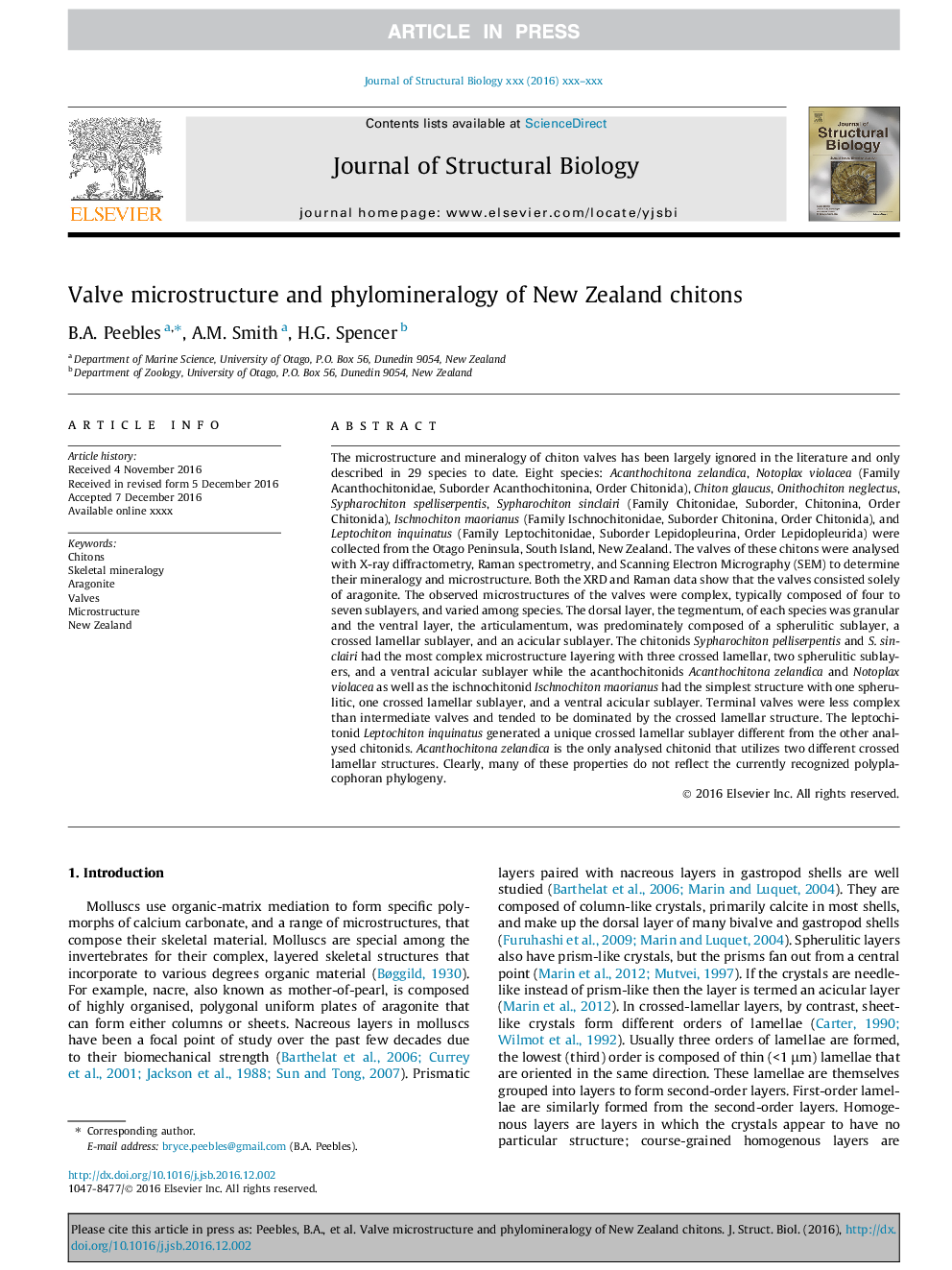| کد مقاله | کد نشریه | سال انتشار | مقاله انگلیسی | نسخه تمام متن |
|---|---|---|---|---|
| 5591501 | 1404978 | 2017 | 10 صفحه PDF | دانلود رایگان |
عنوان انگلیسی مقاله ISI
Valve microstructure and phylomineralogy of New Zealand chitons
دانلود مقاله + سفارش ترجمه
دانلود مقاله ISI انگلیسی
رایگان برای ایرانیان
کلمات کلیدی
موضوعات مرتبط
علوم زیستی و بیوفناوری
بیوشیمی، ژنتیک و زیست شناسی مولکولی
زیست شناسی مولکولی
پیش نمایش صفحه اول مقاله

چکیده انگلیسی
The microstructure and mineralogy of chiton valves has been largely ignored in the literature and only described in 29 species to date. Eight species: Acanthochitona zelandica, Notoplax violacea (Family Acanthochitonidae, Suborder Acanthochitonina, Order Chitonida), Chiton glaucus, Onithochiton neglectus, Sypharochiton spelliserpentis, Sypharochiton sinclairi (Family Chitonidae, Suborder, Chitonina, Order Chitonida), Ischnochiton maorianus (Family Ischnochitonidae, Suborder Chitonina, Order Chitonida), and Leptochiton inquinatus (Family Leptochitonidae, Suborder Lepidopleurina, Order Lepidopleurida) were collected from the Otago Peninsula, South Island, New Zealand. The valves of these chitons were analysed with X-ray diffractometry, Raman spectrometry, and Scanning Electron Micrography (SEM) to determine their mineralogy and microstructure. Both the XRD and Raman data show that the valves consisted solely of aragonite. The observed microstructures of the valves were complex, typically composed of four to seven sublayers, and varied among species. The dorsal layer, the tegmentum, of each species was granular and the ventral layer, the articulamentum, was predominately composed of a spherulitic sublayer, a crossed lamellar sublayer, and an acicular sublayer. The chitonids Sypharochiton pelliserpentis and S. sinclairi had the most complex microstructure layering with three crossed lamellar, two spherulitic sublayers, and a ventral acicular sublayer while the acanthochitonids Acanthochitona zelandica and Notoplax violacea as well as the ischnochitonid Ischnochiton maorianus had the simplest structure with one spherulitic, one crossed lamellar sublayer, and a ventral acicular sublayer. Terminal valves were less complex than intermediate valves and tended to be dominated by the crossed lamellar structure. The leptochitonid Leptochiton inquinatus generated a unique crossed lamellar sublayer different from the other analysed chitonids. Acanthochitona zelandica is the only analysed chitonid that utilizes two different crossed lamellar structures. Clearly, many of these properties do not reflect the currently recognized polyplacophoran phylogeny.
ناشر
Database: Elsevier - ScienceDirect (ساینس دایرکت)
Journal: Journal of Structural Biology - Volume 197, Issue 3, March 2017, Pages 250-259
Journal: Journal of Structural Biology - Volume 197, Issue 3, March 2017, Pages 250-259
نویسندگان
B.A. Peebles, A.M. Smith, H.G. Spencer,